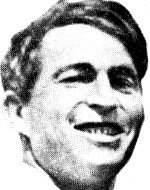Cohen, Amatzia
Son of Masha and Shraga, members of the First Aliya, one of the founders of Be’er Tuvia. He was born on 26.10.1905 in Be’er Tuvia. He studied at the school in the settlement and two years after completing his studies, he was sent to study in Tel Aviv. He studied for four years at the Municipal School for Boys and four years at the Herzliya Gymnasium. His brother Amram testifies of him: “Mostly he loved stories of travels, distant lands, and the lives of the Arabs. He was also fascinated by nature. He specialized in improving chickens in the family nucleus and in cultivating the vegetable garden, and it seems that the plants and animals gave him back love.” When he completed his studies at the Gymnasium, he was accepted to work at the agricultural experimental station in Ben Shemen, where he received the deep appreciation of his superiors. After a while he moved into town to work in the buildings. When one of the Jewish residents of Haifa sought to build his home in Hadar Hacarmel, Amatzia and his friends escaped to watch over the Hebrew work and were also forbidden to do so. Thanks to his “amazing knowledge of Arab customs,” his cellmate says, “he was chosen as the mukhtar and he took upon himself all the arrangements with the hard-core workers.” In 1926 Amatzia traveled to the Netherlands where he spent a year and a half raising cattle and dairy farms. When he returned to Israel, he worked first as a laborer at the agricultural experiment station near Nahalal and in 1927 he joined the “HaTzafon” group in nearby Kiriat Ganim, in the Balfour Forest. In the 1929 riots Be’er Tuvia was destroyed and then he came to his parents’ aid. In 1931, he went to work as an agricultural instructor at the American College in Beirut, where he also succeeded in his work. When he returned to Israel from Beirut, he became a guard on behalf of the Jewish National Fund and later the field guard of the settlement of Ramat Yohanan. As a member of the Haganah since 1922, Amatzia participated in Hanita and the Wingate Night Squads. His settlement was the mainstay of all branches of the agriculture, as one of his friends wrote: “A branch of the agriculture will be on the verge of crisis and a redeemer will arise in Amatziah.” This is how he came to the aid of settlers elsewhere. In his notes, “The Herding Herdsman in Ramat Yohanan,” he published in the journal HaSadeh, in a clear and humorous language, explained how to treat the cattle in a manner appropriate to the Land of Israel. He went to the head of his comrades to repel the attack of an Arab gang on the workers in the field in Ramat Yohanan and the herd in pastures. The attack was repulsed, but Amatzia was wounded and a day later, on the 15th of Tammuz, 14.7.1938, died of his wounds. He was brought to rest in his kibbutz. He left a wife and daughter, parents and brothers. His friends in the kibbutz took out a pamphlet in his memory, in which his friends and family told him about “the boy of nature … a tall man, erect, bareheaded and barefoot.” The nature house in the education center in Gush Zevulun is named after him.
